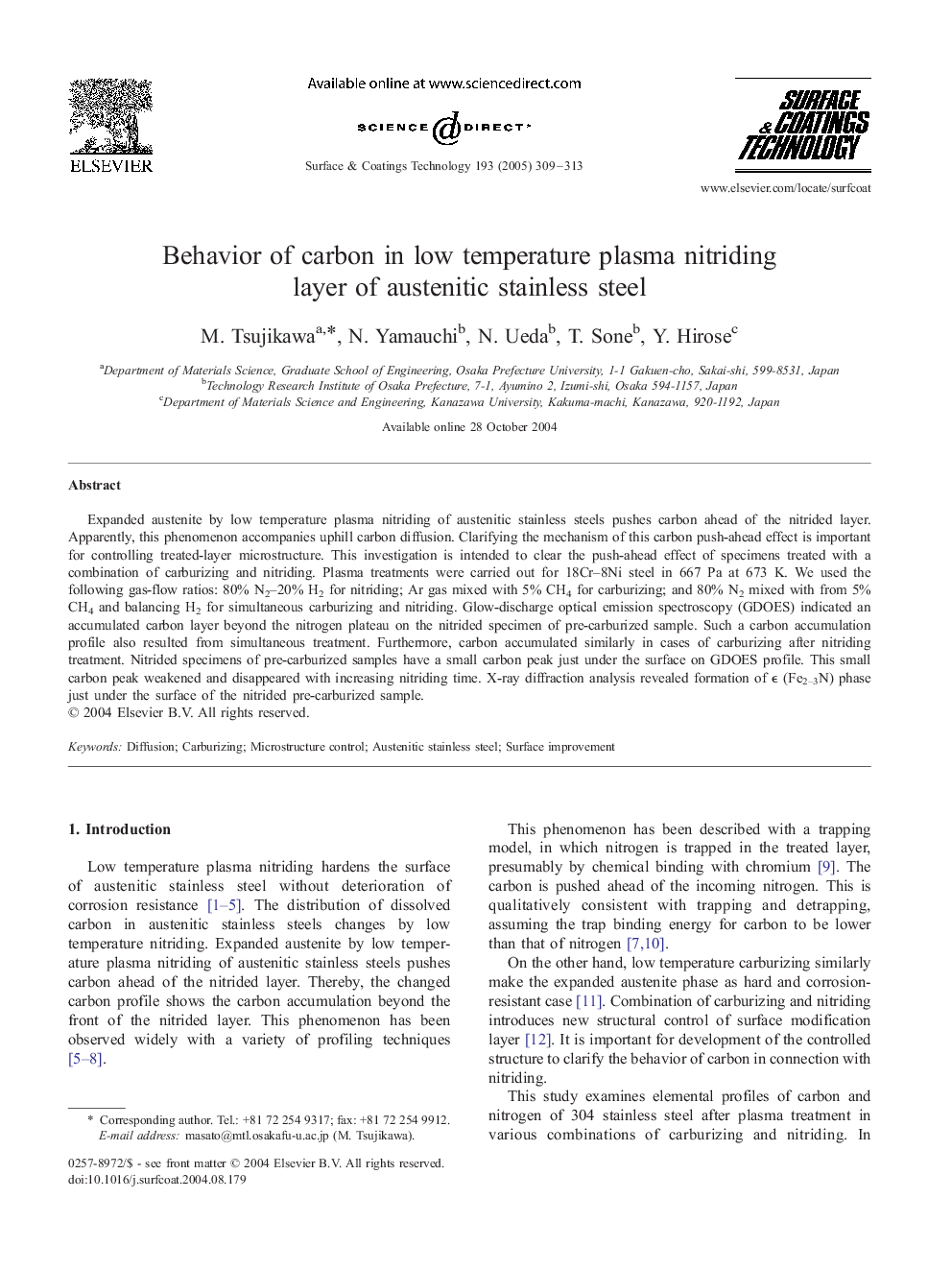| Article ID | Journal | Published Year | Pages | File Type |
|---|---|---|---|---|
| 9809854 | Surface and Coatings Technology | 2005 | 5 Pages |
Abstract
Expanded austenite by low temperature plasma nitriding of austenitic stainless steels pushes carbon ahead of the nitrided layer. Apparently, this phenomenon accompanies uphill carbon diffusion. Clarifying the mechanism of this carbon push-ahead effect is important for controlling treated-layer microstructure. This investigation is intended to clear the push-ahead effect of specimens treated with a combination of carburizing and nitriding. Plasma treatments were carried out for 18Cr-8Ni steel in 667 Pa at 673 K. We used the following gas-flow ratios: 80% N2-20% H2 for nitriding; Ar gas mixed with 5% CH4 for carburizing; and 80% N2 mixed with from 5% CH4 and balancing H2 for simultaneous carburizing and nitriding. Glow-discharge optical emission spectroscopy (GDOES) indicated an accumulated carbon layer beyond the nitrogen plateau on the nitrided specimen of pre-carburized sample. Such a carbon accumulation profile also resulted from simultaneous treatment. Furthermore, carbon accumulated similarly in cases of carburizing after nitriding treatment. Nitrided specimens of pre-carburized samples have a small carbon peak just under the surface on GDOES profile. This small carbon peak weakened and disappeared with increasing nitriding time. X-ray diffraction analysis revealed formation of É (Fe2-3N) phase just under the surface of the nitrided pre-carburized sample.
Related Topics
Physical Sciences and Engineering
Materials Science
Nanotechnology
Authors
M. Tsujikawa, N. Yamauchi, N. Ueda, T. Sone, Y. Hirose,
